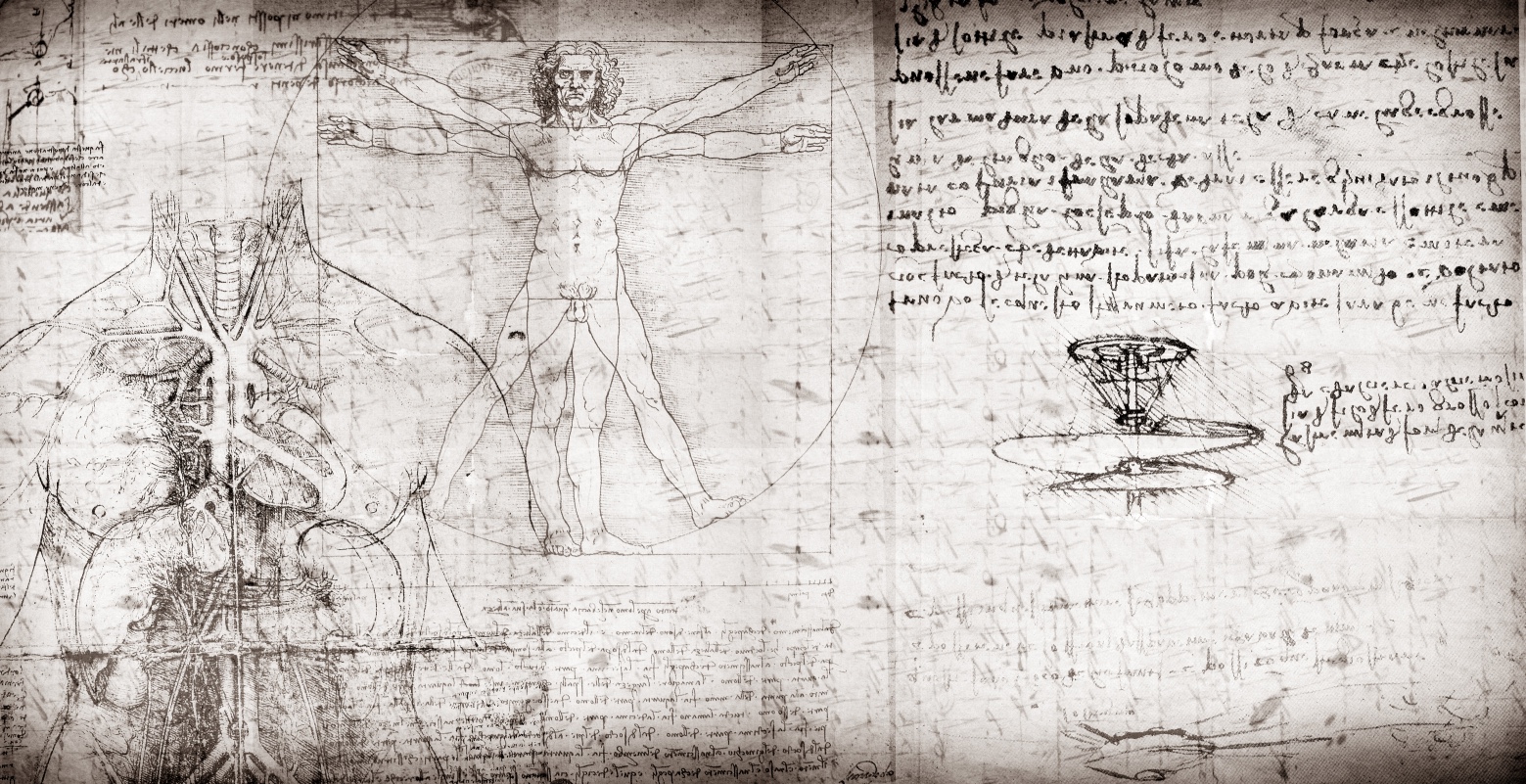It is very curious that a novel and not a scientific article (although it will come later), was chosen to reveal the mysterious origins of Leonardo da Vinci. The recently-published literary work, which targets all types of readers, wants to honor the universality of Leonardo, the most famous figure of the Italian Renaissance. His genius, like his works, belongs to humanity as a whole and, perhaps, “giving” another piece of his encyclopedic knowledge to everyone was a generous act. Immersing yourself in one of the most culturally fertile of all eras; reading between the lines and understanding how Florentines of times gone by were not so different from us; gathering all the emotions that an academic text would not have revealed: these are all opportunities we cannot miss. Especially if you are passionate about history, culture, and art, or simply curious about the man behind the wonderful works he created and left us.
Discovering who Leonardo’s mother was, does not directly impact his scientific, artistic, or engineering production. It does not explain his anatomical studies or machines for war, nor his curiosity about bird flight, which generated early designs of what we call helicopters today.
Or does it?
How can we exclude or prove it with certainty? Each of us cultivates interests we think are exclusively ours, but are we sure we weren’t influenced by our environment, the culture we breathed, and the guidance we received? By the people we met, and by those our friends and family met? How many times did we hear that artistic talent is inherited, how many times were we told that one “is born into a profession” or that one has a profession “in their blood” because talent seems to have passed from one generation to another?
But finally solving this five-century-long mystery, that is, giving a name to a woman who – despite being hidden for so long – remains Leonardo da Vinci’s mother, is more than satisfying a curiosity about the man who transformed the Italian Renaissance. Tracing her profile has, in fact, completed a puzzle and at the same time opened the door to another universe full of more questions.
Caterina was of Caucasian origins and a slave. We can assume that her bond with both Leonardo and his father was not lived openly, under the eyes of the community. Considering it all, it is inevitable to wonder whether Leonardo’s personality was influenced and whether such emotional and personal baggage – of which we know nothing – affected the thinking of the young, creative man. Perhaps, his mother’s smile was etched into his memory, so how can we not think that it is also hidden in that of the Mona Lisa?
The long research carried out by Professor Carlo Vecce, the thousands of handwritten pages consulted in archives and libraries, the mountain of information that was somehow condensed in Il Sorriso di Caterina, help us reconstruct and bring to light the bond between Leonardo and his mother. But they were also precious for another reason. What reading can we give to Leonardo’s new origins? Do they change anything in the way we perceive him? Do these discoveries change somehow his traditional iconography?
The first and most obvious answer is also the simplest: no, nothing changes. It wouldn’t be historically correct to apply contemporary concepts to past events, just as we can’t generalize and think we all react or perceive things in the same way. The final product, so to speak, doesn’t change: the works Leonardo left us are and will remain what they have always been.
There will always be something mysterious in it, though. Something will always escape us, as inevitably happens with any artistic creation. Not everything can be explained: there will always be something ineffable, elusive, that goes beyond.
However, taking this journey is fascinating. A journey back in time, to recover a piece of our Renaissance through the artist that perhaps best embodies it. A journey where we finally discover that, although he may have been a bit of a stranger by kinship, Leonardo finally became very “Italian,” too. Il Sorriso di Caterina doesn’t only reveal his origins, it helps grasp, while reading, a piece of Italian culture. It finally returns to Leonardo an element that ties him to the most classic of all Italian prototypes: his irreplaceable bond with his mother.
E’ molto curioso che sia stato scelto un romanzo e non un saggio scientifico (anche se questo poi sarà prodotto) per svelare le origini misteriose di Leonardo da Vinci. L’intento divulgativo dell’opera letteraria appena pubblicata in Italia, rivolgendosi a ogni tipologia di lettore, è un riconoscimento alla universalità del personaggio più noto del Rinascimento italiano. Il suo genio, come le sue opere, sono patrimonio dell’umanità e, forse, poter “dare” un altro pezzo del suo sapere enciclopedico a tutti è stato un atto generoso. Potersi immergere in una delle epoche più feconde, cercare di leggere tra le righe per capire che quegli antichi fiorentini non erano poi così lontano o diversi da noi, recuperare tutte quelle emozioni che uno scritto accademico non avrebbe rivelato, è un’occasione da non perdere. Soprattutto se si è appassionati di storia, cultura e arte o, semplicemente, se si è curiosi di conoscere un po’ di più l’uomo dietro alle mirabili opere che ci ha lasciato e per le quali continuiamo a considerarlo un genio a distanza di oltre 500 anni.
Scoprire chi era la madre di Leonardo non incide direttamente sulla produzione scientifica, pittorica, o ingegneristica di Leonardo, non spiega gli studi anatomici o le macchine per la guerra, né le curiosità sul volo degli uccelli che poi generarono i progetti di quelli che oggi chiamiamo elicotteri. Oppure incide? Come possiamo escluderlo o affermarlo con sicurezza? Ciascuno di noi, mentre coltiviamo interessi che pensiamo siano esclusivamente nostri, siamo certi di non aver ricevuto influenze dall’ambiente che abbiamo frequentato, dalla cultura che abbiamo respirato, dai consigli, dalle frequentazioni, dalle conoscenze di amici e parenti? Quante volte si dice che la vena artistica si eredita, quante volte abbiamo sentito dire che qualcuno è figlio d’arte o che uno ha il mestiere nelle vene perché il talento sembra essere passato di generazione in generazione?
In ogni caso, più che soddisfare una curiosità sulle origini dell’uomo che visse e trasformò il Rinascimento italiano, chiudere il cerchio su un mistero che durava da 5 secoli, riuscire cioè a dare un’identità a una donna che per quanto sia stata oscurata è pur sempre stata nientemeno che la madre di Leonardo da Vinci, averne tracciato il profilo ha nei fatti completato un puzzle e contemporaneamente spalancato la porta su un altro universo pieno di altre domande.
Viste le origini caucasiche di Caterina, data la sua condizione di schiavitù, considerato il suo essere straniera, posto che il suo legame sia con il padre di Leonardo che con Leonardo stesso non fu vissuto alla luce del sole già ai suoi tempi, è inevitabile domandarsi cosa abbia influito e cosa no sulla personalità di Leonardo e chiedersi se e come tutto questo bagaglio di informazioni che non ci sono note, abbiano costruito il pensiero del giovane creativo. Magari, nella sua memoria, il sorriso della mamma è rimasto scolpito e allora come non immaginare che nel volto della celeberrima Monna Lisa non si nasconda anche il sorriso di Caterina?
L’annoso lavoro di ricerca portato avanti dal professor Carlo Vecce, le migliaia di pagine manoscritte sfogliate tra archivi e biblioteche, la montagna di informazioni che si sono in qualche modo riassunte nel caso editoriale de “Il sorriso di Caterina”, dove tante tessere hanno ricostruito e riportato alla luce il legame tra Leonardo e sua madre, è stato prezioso anche per un’altra ragione. Che lettura diamo alle nuove origini di Leonardo? Cambiano qualcosa nella percezione che abbiamo di lui? Ce lo rendono diverso rispetto all’iconografia classica?
In realtà, la prima e più ovvia risposta dovrebbe essere la più semplice: no, non cambia nulla nel senso che non è storicamente corretto applicare concetti contemporanei a eventi passati così come non si può fare di tutta l’erba un fascio, pensando che tutti possano reagire o percepire le cose allo stesso modo, con gli stessi valori o provando le stesse sensazioni, così come non cambia nulla sul prodotto finale: le opere che Leonardo ci ha lasciato quelle sono e tali rimarranno.
La nostra comprensione e ammirazione dovrà sempre e comunque tener conto di una percentuale di impercettibilità, ci sfuggirà sempre qualcosa, come irrimediabilmente accadrà per qualsiasi creazione artistica. Non tutto si può spiegare, ci sarà sempre un che di ineffabile, di sfuggente, che va oltre.
Però è certo che è estremamente affascinante pensare di fare un viaggio nel tempo per recuperare un pezzo del nostro Rinascimento attraverso uno dei personaggi che meglio lo incarnano e scoprire che, per quanto possa essere stato un po’straniero per parentela, Leonardo è finalmente diventato anche molto “italiano”: il romanzo che svela le sue origini, e che tra le pagine aiuta a cogliere un pezzo della cultura italiana, è anche un mezzo che finalmente restituisce a Leonardo l’elemento che lo accomuna al prototipo più classico degli italiani: il suo insostituibile legame con la mamma.






























